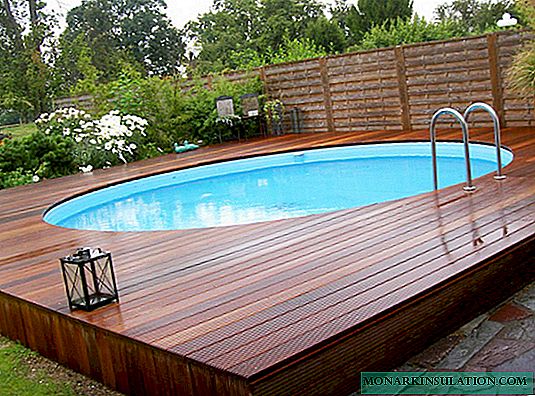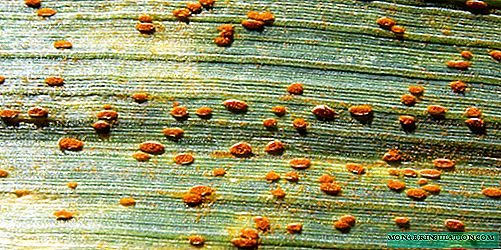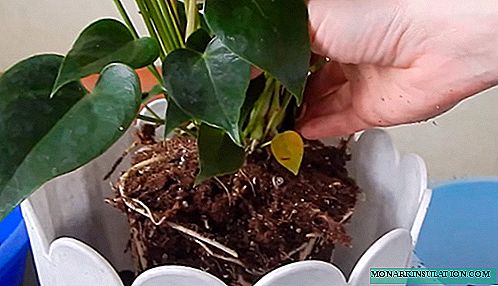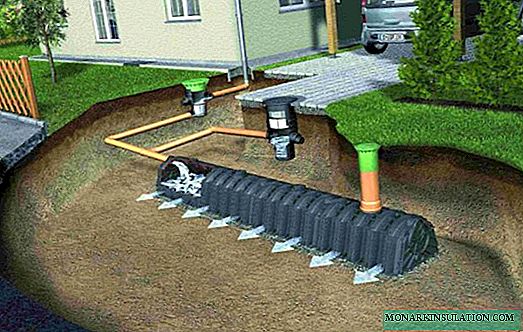
Most often, a person does not choose a plot for a summer residence, but is content with what he will be offered in the architectural department. And in the process of using the cottage, it turns out that the earth came across with a high level of humidity. Therefore, the trees do not want to grow, and garden crops begin to hurt. And the worst thing is that close groundwater can wash the walls of the foundation, cause shrinkage of the cottages and outbuildings, and the basement will suffer from flooding every spring. Moreover, excess moisture in winter raises the soil, makes it swell, which is why the blind area, paths and other design elements of the site will begin to crack at the seams. The owner has only one thing - to equip the drainage of the site with his own hands. This procedure is simple, takes a couple of weeks. But you will avoid many serious troubles and preserve the health of the garden and buildings.
Depending on the cause of the flooding of the site, drainage is open or closed. If the site is dominated by clay soil, which delays precipitation and thawed snow on the surface, then to put the site in order it is enough to create an open drainage system through which excess water will leave the soil surface.
The second reason for stagnation of moisture is closely passing groundwater. It is they who flood the basement in the spring, erode the foundation, crush the soil, and you can get rid of the problem only with a solid closed drainage system. Consider how to make drainage on the site in the most simple ways.
Construction # 1 - open (surface) drainage
Local way
An open drainage network is created without drawing up a preliminary scheme or with it. The simplest option is local drainage, in separate places. It is created if the problem of flooding concerns only certain points of the site, and even then during periods of heavy precipitation.

Water inlets are placed in places of the greatest accumulation of water (near drains, along the edge of paths, etc.), digging a sealed container or drainage wells into the ground
In this case, they first notice the places where water stagnates most often, and they dig in water intakes or closed containers from which later it will be possible to take liquid for watering the garden. As a rule, most of the water remains:
- at the end of the gutter;
- gentle plots - near the porch and terrace;
- in depressions with uneven terrain.
If the place of water accumulation is located near the boundary of the site, then with the help of a trench, drains are diverted outside it. And at distant positions, water intakes are dug into the ground.
Ditching
The second option for drainage, the most beneficial for clay soil, is the laying of ditches throughout the site. First, they outline a plan on paper where they mark out the entire network of ditches and the place of the drainage well where water will be collected.

The depth of the drainage ditch is made about half a meter, and the location frequency is determined by the level of bogging of the site (the wetter the ground, the more ditches must be dug)
In order for the open drainage system to work efficiently, ditches must be done with a bias towards the future water intake. If the surface of the earth is uneven, then they dig down the topography, and if it is flat, then you will have to create a bias artificially, otherwise the water will stagnate in the drainage networks.
The number of ditches is determined by the degree of soil moisture. The more clay it is, the more often drainage networks are laid. The depth of the trenches is not less than half a meter, and the width is determined by the degree of proximity to the drainage well. The widest is the trench, which collects water from everyone else and sends it to the well.

It is necessary to check the quality of runoff on ditches that have not yet been refined; otherwise, therefore, additional efforts will have to be made to dismantle the design
After the entire drainage system in the area was dug, you need to check it for drainage quality. To do this, using ordinary watering hoses, a strong stream of water (preferably from several points at once) is let into the ditches and it is observed how quickly the stream goes into the drainage well. If in some areas the flow is too slow, then you need to make a larger slope.
After checking the functioning of the system, they begin to come up with ways to decorate it. Few people like the look of dug ditches in their area, so they try to somehow cover them. The easiest way to do this is with gravel of different fractions. The bottom is filled with large pebbles, and on top lay smaller. The last layer can even be decorated with marble chips or blue-painted decorative gravel, thereby creating the likeness of dry streams. It remains to decorate their shores with green plants, and the drainage system will turn into a unique design element. Ditches around the perimeter of the cottage can be closed with decorative grilles.

If you leave the ditches open, it is best to give them the shape of a water source, creating something like a stream. But this option will have to be periodically cleaned from garbage
Important! Filling the ditches with gravel protects the walls from collapse and thereby extends the life of your drainage system!
Construction # 2 - closed (deep) drainage
If the problem of waterlogging is caused not by clay, but by closely located groundwater, then it is better to create deep drainage on the site. Spend it in the following order:
1. Determine the depth of the pipe. The denser the ground, the less shallow pipes are laid. So, for sandy soil you need trenches of at least a meter, for loam - 80 cm, for clay soil - 70-75 cm. In this case, do not forget to take into account the depth of freezing of the soil in your area. Better if the pipes are below this level. Then in the winter they will not be deformed by the remains of moisture and expanding soil.
2. Pick up the pipe. Today, most drainage pipes are made of perforated plastic. It is cheaper than ceramic and safe, unlike asbestos cement. But the pipe should be further protected from the penetration of small particles of earth and sand, otherwise it will clog over time and cease to perform drainage functions. To do this, use geotextiles, which wrap each pipe, taking into account the type of soil.

Sand and gravel cushion plays the role of a shock absorber and an additional filter for drainage pipes, not letting large particles of land and debris that bring ground water
If the earth is clay, then geotextiles can not be used, but the pipes should be laid on a gravel pillow (20 cm). On loam, crushed stone bedding is not carried out, but the pipes are wrapped in a filter cloth. On sandy soils, it is necessary to wrap with geotextiles and fill the pipes with gravel from above and below.

Ready-made drainage pipes are created from perforated corrugated plastic, which is already wrapped with filter cloth, therefore, do not require additional work during installation
3. We prepare places for the water intake. Before starting excavation, you need to decide where your water will flow. It may simply be the exit of the pipe outside the area where it will then fall into the ditch. But it is better to make a drainage well. He will help out in a dry year, because this water can be used for garden needs. And it’s not always possible to take the drainage system off the site.
4. Earthwork. Ditches dig at a slope to the place of the water intake. Tentatively - there should be 7 cm of slope per meter of the ditch. Be sure to check the grade with a building level. The best arrangement of the trenches is the Christmas tree, in which all the side branches flow into one central branch created from a wider pipe. And from it, water enters the well.
5. Preparation of the bottom of the trenches for laying pipes. When the network of trenches is dug, it is necessary to prepare the bottom for laying pipes. There should be no drops on it, because in places of breaks the plastic will begin to break under the weight of the soil. It is most convenient to create a cushioning pad. To do this, 10 cm of coarse-grained sand is poured onto the bottom, and on top is the same layer of gravel. And already pipes are laid on it. If for some reason backfilling cannot be carried out, then the entire ditch is additionally lined with geotextiles to prevent siltation of pipes.
Important! Pick up a filter cloth of low density, otherwise water will not be able to quickly break through its walls.
6. Laying the drainage system. All pipes are laid out in trenches and assembled into a single network using tees and crosses.

To connect the drainage pipes into a single network, additional elements such as crosses and tees are used, selecting them according to the diameter of the pipes
Further, the system is filled up with a layer of sand from above, and then with crushed stone (10-15 cm per layer). The remaining space is clogged with ordinary earth, forming rollers above the soil level. Over time, the layers will settle, and the mounds will align with the surface of the soil.
After the drainage on the site is done, it is advisable not to drive it with heavy equipment so as not to crush the system. It is better to complete all complex construction work before creating a drainage network, because it is more difficult to restore it than to create a new one.











